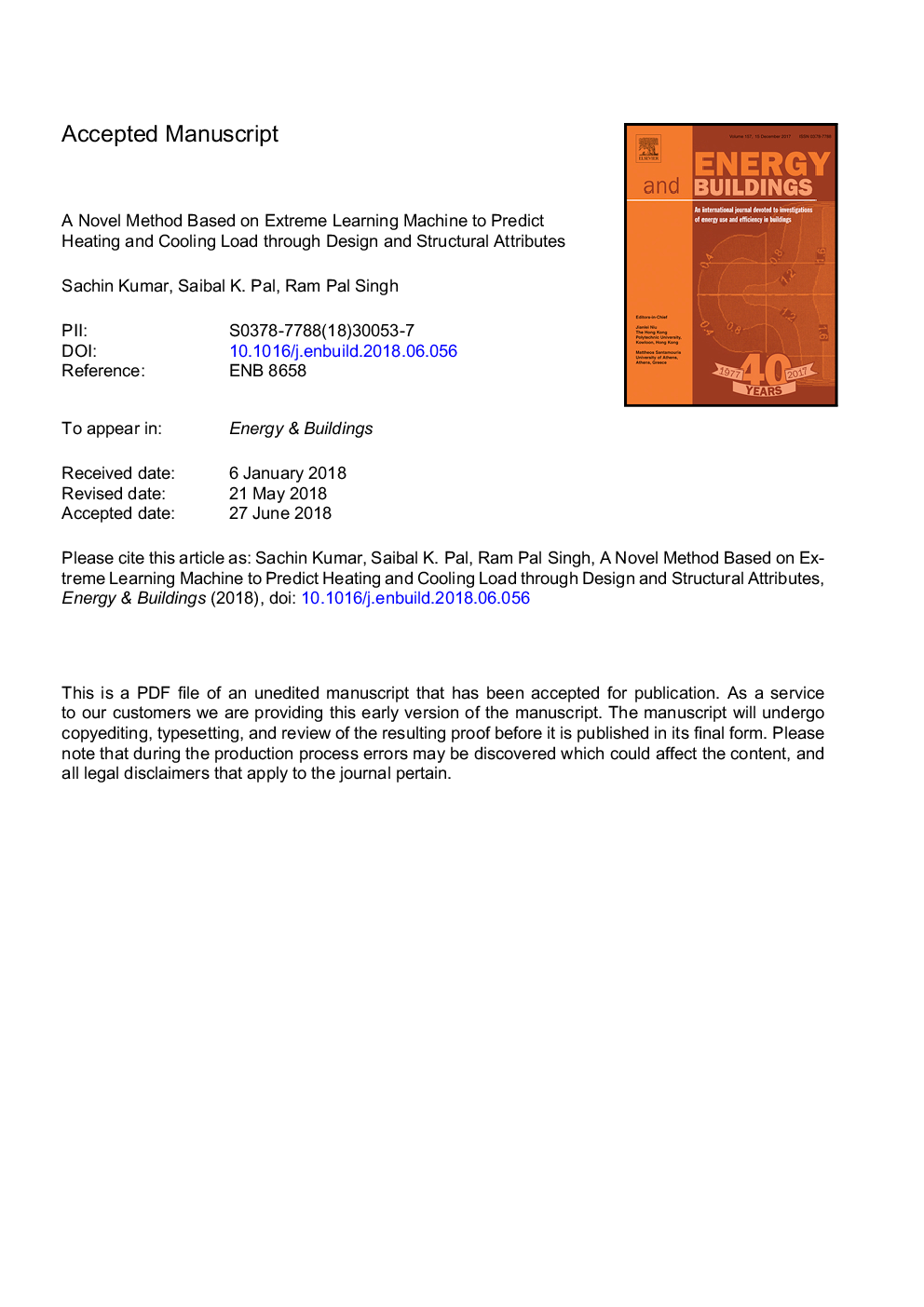| Article ID | Journal | Published Year | Pages | File Type |
|---|---|---|---|---|
| 6727008 | Energy and Buildings | 2018 | 20 Pages |
Abstract
In the present day environment, smart buildings require optimization of energy consumption through monitoring, consumption prediction and making policy decisions accordingly. Attributes related to building design and structure play a vital role in heating load(HL) and cooling load(CL) of the building which directly affects the energy performance of the buildings. For prediction of HL and CL, emerging machine learning approaches can help in improving accuracy and efficiency in real time. This paper provides improvements in energy load assessment of the buildings. It is the first is the in-depth study and analysis of design and structural attributes and their correlation with HL and CL, the novel methods based on ELM and its variants online sequential ELM(OSELM) to predict HL and CL. This study also proposes OSELM based online/real-time prediction when data is coming in stream The total 24 models have been developed including 12 models based on ELM and 12 models based on OSELM with different feature sets and activation functions. Models have been compared on the basis of accuracy, computational performance and efficiency with few existing models. The experimental results show that the proposed models learn better and outperform other popular machine learning approaches such as the artificial neural network(ANNs), support vector machine(SVM), radial basis function network(RBFN), random forest(RF) and existing work in the energy and building domain.
Related Topics
Physical Sciences and Engineering
Energy
Renewable Energy, Sustainability and the Environment
Authors
Sachin Kumar, Saibal K. Pal, Ram Pal Singh,
